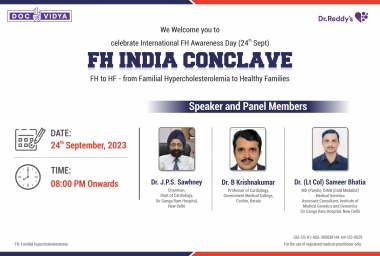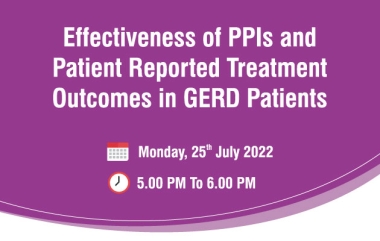test
test
test
test
test
test
test
test
test
test
Webinars
Videos
Heart Failure Peer Exchange Forum- Mumbai
Eminent Cardiologists from Mumbai share their practical experiences and insights on managing Heart Failure cases
Heart Failure Peer Exchange Forum- Mumbai
Eminent Cardiologists from Mumbai share their practical experiences and insights on managing Heart Failure cases
Heart Failure Peer Exchange Forum- Mumbai
Eminent Cardiologists from Mumbai share their practical experiences and insights on managing Heart Failure cases
Heart Failure Peer Exchange Forum- Kolhapur
Eminent Cardiologists from Kolhapur share their practical experiences and insights on managing Heart Failure cases
Heart Failure Peer Exchange Forum- Kolhapur
Eminent Cardiologists from Kolhapur share their practical experiences and insights on managing Heart Failure cases
Heart Failure Peer Exchange Forum- Kolhapur
Eminent Cardiologists from Kolhapur share their practical experiences and insights on managing Heart Failure cases
Heart Failure Peer Exchange Forum-Bangalore
Eminent Cardiologists from Bangalore share their practical experiences and insights on managing Heart Failure cases
Heart Failure Peer Exchange Forum-Bangalore
Eminent Cardiologists from Bangalore share their practical experiences and insights on managing Heart Failure cases
Heart Failure Peer Exchange Forum-Bangalore
Eminent Cardiologists from Bangalore share their practical experiences and insights on managing Heart Failure cases
Courses
Medshorts

Digitoxin dosing found safe in heart failure with reduced ejection fraction
A recent study suggests that use of digitoxin is simple and safe in heart failure with reduced ejection fraction (HFrEF). The study results were published in the journal, Clinical research in Cardiology.
The DIGIT-HF was a randomized, double-blind trial that enrolled 317 patients who were administered with a dose of digitoxin at 0.07 mg once daily (o.d.). At week 6, after serum levels were determined, the digitoxin dose was either left unchanged or reduced to 0.05 mg o.d. For females with age ≥ 75 years, eGFR < 50 ml/min/1.73 m2, and body mass index (BMI) < 27 kg/m2 each, one point for the digitoxin dosing score was assigned. The need for dose reduction was determined with a score of ≥ 1 that indicated sensitivity/specificity of 81.6%/49.7%, respectively.
On analysis of the validation data that included 64 randomized patients, it was found that digitoxin yielded sensitivity/specificity of 87.5%/37.5%, respectively. Thus, for patients with HFrEF, the treatment dosage of digitoxin should be started at 0.05 mg o.d. in either female sex with age ≥ 75 years, eGFR < 50 ml/min/1.73m2, or BMI < 27 kg/m2. For other patients, the safe dosage of digitoxin may be 0.07 mg o.d. Hence, digitoxin dosing may be simple and safe in patients with HFrEF.

Digitoxin dosing found safe in heart failure with reduced ejection fraction
A recent study suggests that use of digitoxin is simple and safe in heart failure with reduced ejection fraction (HFrEF). The study results were published in the journal, Clinical research in Cardiology.
The DIGIT-HF was a randomized, double-blind trial that enrolled 317 patients who were administered with a dose of digitoxin at 0.07 mg once daily (o.d.). At week 6, after serum levels were determined, the digitoxin dose was either left unchanged or reduced to 0.05 mg o.d. For females with age ≥ 75 years, eGFR < 50 ml/min/1.73 m2, and body mass index (BMI) < 27 kg/m2 each, one point for the digitoxin dosing score was assigned. The need for dose reduction was determined with a score of ≥ 1 that indicated sensitivity/specificity of 81.6%/49.7%, respectively.
On analysis of the validation data that included 64 randomized patients, it was found that digitoxin yielded sensitivity/specificity of 87.5%/37.5%, respectively. Thus, for patients with HFrEF, the treatment dosage of digitoxin should be started at 0.05 mg o.d. in either female sex with age ≥ 75 years, eGFR < 50 ml/min/1.73m2, or BMI < 27 kg/m2. For other patients, the safe dosage of digitoxin may be 0.07 mg o.d. Hence, digitoxin dosing may be simple and safe in patients with HFrEF.


Digitoxin dosing found safe in heart failure with reduced ejection fraction
A recent study suggests that use of digitoxin is simple and safe in heart failure with reduced ejection fraction (HFrEF). The study results were published in the journal, Clinical research in Cardiology.
The DIGIT-HF was a randomized, double-blind trial that enrolled 317 patients who were administered with a dose of digitoxin at 0.07 mg once daily (o.d.). At week 6, after serum levels were determined, the digitoxin dose was either left unchanged or reduced to 0.05 mg o.d. For females with age ≥ 75 years, eGFR < 50 ml/min/1.73 m2, and body mass index (BMI) < 27 kg/m2 each, one point for the digitoxin dosing score was assigned. The need for dose reduction was determined with a score of ≥ 1 that indicated sensitivity/specificity of 81.6%/49.7%, respectively.
On analysis of the validation data that included 64 randomized patients, it was found that digitoxin yielded sensitivity/specificity of 87.5%/37.5%, respectively. Thus, for patients with HFrEF, the treatment dosage of digitoxin should be started at 0.05 mg o.d. in either female sex with age ≥ 75 years, eGFR < 50 ml/min/1.73m2, or BMI < 27 kg/m2. For other patients, the safe dosage of digitoxin may be 0.07 mg o.d. Hence, digitoxin dosing may be simple and safe in patients with HFrEF.

Larger reductions in preserved ejection fraction and obesity from semaglutide in patients with heart failure
According to a recent study, use of semaglutide in patients with heart failure largely reduced preserved ejection fraction and obesity. The results of the study were published in The New England Journal of Medicine.
In this study, 529 patients with heart failure, having preserved ejection fraction and a body-mass index (BMI) of 30 or higher, received 2.4mg of once-weekly semaglutide or placebo for 52 weeks. The dual primary endpoints included change from baseline in the Kansas City Cardiomyopathy Questionnaire clinical summary score (KCCQ-CSS) and the change in body weight. Confirmatory secondary endpoints were changes in the 6-minute walk distance, differences in the change in the KCCQ-CSS and 6-minute walk distance, as well as the change in the C-reactive protein (CRP) level.
It was observed that the mean change in the KCCQ-CSS and mean percentage change in body weight with semaglutide and placebo was 16.6 points and 8.7 points; and -13.3% and -2.6%, respectively. Also, the mean change in the 6-minute walk distance with semaglutide and placebo was 21.5m and 1.2m, respectively. The secondary endpoint showed that semaglutide produced more wins than placebo. The mean percentage change in the CRP level was -43.5% and -7.3% with semaglutide and placebo, respectively. Finally, 35 participants reported adverse events with semaglutide while 71 with the placebo.
From the above results, it may be concluded that in patients with heart failure, having preserved ejection fraction and obesity, semaglutide treatment showed larger reductions in symptoms and physical limitations, while leading to greater improvements in exercise function and greater weight loss than placebo.

Larger reductions in preserved ejection fraction and obesity from semaglutide in patients with heart failure
According to a recent study, use of semaglutide in patients with heart failure largely reduced preserved ejection fraction and obesity. The results of the study were published in The New England Journal of Medicine.
In this study, 529 patients with heart failure, having preserved ejection fraction and a body-mass index (BMI) of 30 or higher, received 2.4mg of once-weekly semaglutide or placebo for 52 weeks. The dual primary endpoints included change from baseline in the Kansas City Cardiomyopathy Questionnaire clinical summary score (KCCQ-CSS) and the change in body weight. Confirmatory secondary endpoints were changes in the 6-minute walk distance, differences in the change in the KCCQ-CSS and 6-minute walk distance, as well as the change in the C-reactive protein (CRP) level.
It was observed that the mean change in the KCCQ-CSS and mean percentage change in body weight with semaglutide and placebo was 16.6 points and 8.7 points; and -13.3% and -2.6%, respectively. Also, the mean change in the 6-minute walk distance with semaglutide and placebo was 21.5m and 1.2m, respectively. The secondary endpoint showed that semaglutide produced more wins than placebo. The mean percentage change in the CRP level was -43.5% and -7.3% with semaglutide and placebo, respectively. Finally, 35 participants reported adverse events with semaglutide while 71 with the placebo.
From the above results, it may be concluded that in patients with heart failure, having preserved ejection fraction and obesity, semaglutide treatment showed larger reductions in symptoms and physical limitations, while leading to greater improvements in exercise function and greater weight loss than placebo.


Larger reductions in preserved ejection fraction and obesity from semaglutide in patients with heart failure
According to a recent study, use of semaglutide in patients with heart failure largely reduced preserved ejection fraction and obesity. The results of the study were published in The New England Journal of Medicine.
In this study, 529 patients with heart failure, having preserved ejection fraction and a body-mass index (BMI) of 30 or higher, received 2.4mg of once-weekly semaglutide or placebo for 52 weeks. The dual primary endpoints included change from baseline in the Kansas City Cardiomyopathy Questionnaire clinical summary score (KCCQ-CSS) and the change in body weight. Confirmatory secondary endpoints were changes in the 6-minute walk distance, differences in the change in the KCCQ-CSS and 6-minute walk distance, as well as the change in the C-reactive protein (CRP) level.
It was observed that the mean change in the KCCQ-CSS and mean percentage change in body weight with semaglutide and placebo was 16.6 points and 8.7 points; and -13.3% and -2.6%, respectively. Also, the mean change in the 6-minute walk distance with semaglutide and placebo was 21.5m and 1.2m, respectively. The secondary endpoint showed that semaglutide produced more wins than placebo. The mean percentage change in the CRP level was -43.5% and -7.3% with semaglutide and placebo, respectively. Finally, 35 participants reported adverse events with semaglutide while 71 with the placebo.
From the above results, it may be concluded that in patients with heart failure, having preserved ejection fraction and obesity, semaglutide treatment showed larger reductions in symptoms and physical limitations, while leading to greater improvements in exercise function and greater weight loss than placebo.

Superior weight reduction with tirzepatide independent of gastrointestinal adverse events in people with type 2 diabetes
A recent study suggests that people with type 2 diabetes showed superior weight reduction with tirzepatide, independent of gastrointestinal (GI) adverse events (AEs) and nausea, vomiting or diarrhoea (N/V/D). This study was published in the journal, Diabetes, Obesity & Metabolism.
The post hoc analysis of the SURPASS -1 to -5 clinical trials included 6263 participants whose treatment for type 2 diabetes involved a random assignment to receive tirzepatide (5, 10, or 15 mg) once a week as monotherapy or in addition to baseline antihyperglycemic medication(s) as a comparator (placebo, semaglutide 1 mg once a week, or titrated daily basal insulins). The participants self-reported (yes/no) for any N/V/D or GI AEs. Change in body weight was assessed from baseline within each trial and subgroup. Mediation analyses to study the effects of tirzepatide on weight change were conducted.
At the end of the study period, nausea (12%-24%), vomiting (2%-13%), and diarrhoea (12%-22%) were the most commonly reported GI AEs with tirzepatide. The mean weight reduction was significantly greater with tirzepatide when compared to the placebo, with consistency being maintained between participants who reported N/V/D and those who didn’t. At the primary timepoint, individuals who experienced N/V/D symptoms showed weight reduction ranging from -6.2 to -14.9 kg, while those without these symptoms had a mean weight reduction ranging from -6.2 to -13.3 kg. According to the median analyses, there was only a minimal contribution with N/V/D and GI AEs to the overall difference in weight change.
From the above results, it can be concluded that superior weight reduction observed with tirzepatide when compared to other comparators appears to be independent of N/V/D or GI AEs.

Superior weight reduction with tirzepatide independent of gastrointestinal adverse events in people with type 2 diabetes
A recent study suggests that people with type 2 diabetes showed superior weight reduction with tirzepatide, independent of gastrointestinal (GI) adverse events (AEs) and nausea, vomiting or diarrhoea (N/V/D). This study was published in the journal, Diabetes, Obesity & Metabolism.
The post hoc analysis of the SURPASS -1 to -5 clinical trials included 6263 participants whose treatment for type 2 diabetes involved a random assignment to receive tirzepatide (5, 10, or 15 mg) once a week as monotherapy or in addition to baseline antihyperglycemic medication(s) as a comparator (placebo, semaglutide 1 mg once a week, or titrated daily basal insulins). The participants self-reported (yes/no) for any N/V/D or GI AEs. Change in body weight was assessed from baseline within each trial and subgroup. Mediation analyses to study the effects of tirzepatide on weight change were conducted.
At the end of the study period, nausea (12%-24%), vomiting (2%-13%), and diarrhoea (12%-22%) were the most commonly reported GI AEs with tirzepatide. The mean weight reduction was significantly greater with tirzepatide when compared to the placebo, with consistency being maintained between participants who reported N/V/D and those who didn’t. At the primary timepoint, individuals who experienced N/V/D symptoms showed weight reduction ranging from -6.2 to -14.9 kg, while those without these symptoms had a mean weight reduction ranging from -6.2 to -13.3 kg. According to the median analyses, there was only a minimal contribution with N/V/D and GI AEs to the overall difference in weight change.
From the above results, it can be concluded that superior weight reduction observed with tirzepatide when compared to other comparators appears to be independent of N/V/D or GI AEs.


Superior weight reduction with tirzepatide independent of gastrointestinal adverse events in people with type 2 diabetes
A recent study suggests that people with type 2 diabetes showed superior weight reduction with tirzepatide, independent of gastrointestinal (GI) adverse events (AEs) and nausea, vomiting or diarrhoea (N/V/D). This study was published in the journal, Diabetes, Obesity & Metabolism.
The post hoc analysis of the SURPASS -1 to -5 clinical trials included 6263 participants whose treatment for type 2 diabetes involved a random assignment to receive tirzepatide (5, 10, or 15 mg) once a week as monotherapy or in addition to baseline antihyperglycemic medication(s) as a comparator (placebo, semaglutide 1 mg once a week, or titrated daily basal insulins). The participants self-reported (yes/no) for any N/V/D or GI AEs. Change in body weight was assessed from baseline within each trial and subgroup. Mediation analyses to study the effects of tirzepatide on weight change were conducted.
At the end of the study period, nausea (12%-24%), vomiting (2%-13%), and diarrhoea (12%-22%) were the most commonly reported GI AEs with tirzepatide. The mean weight reduction was significantly greater with tirzepatide when compared to the placebo, with consistency being maintained between participants who reported N/V/D and those who didn’t. At the primary timepoint, individuals who experienced N/V/D symptoms showed weight reduction ranging from -6.2 to -14.9 kg, while those without these symptoms had a mean weight reduction ranging from -6.2 to -13.3 kg. According to the median analyses, there was only a minimal contribution with N/V/D and GI AEs to the overall difference in weight change.
From the above results, it can be concluded that superior weight reduction observed with tirzepatide when compared to other comparators appears to be independent of N/V/D or GI AEs.









































